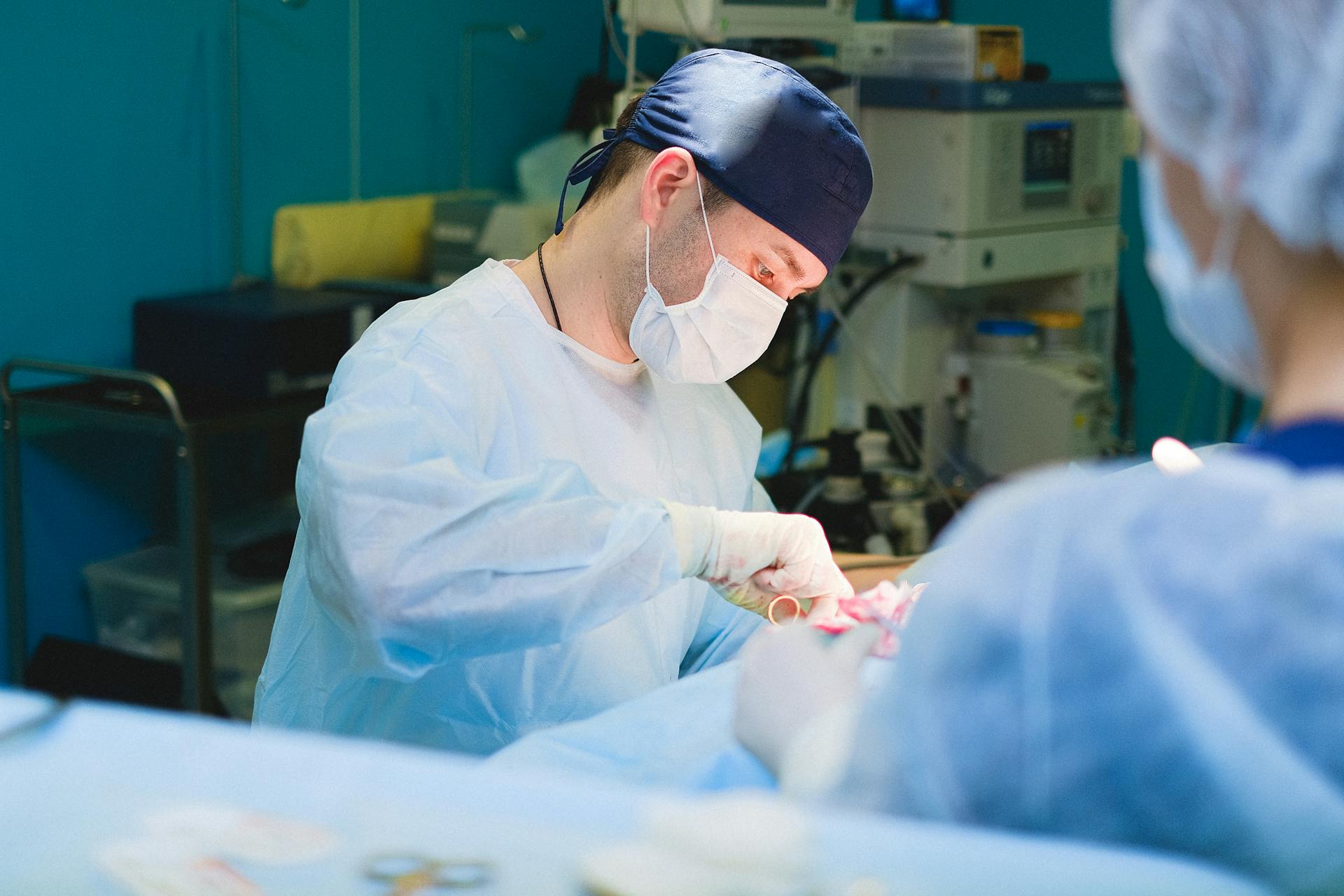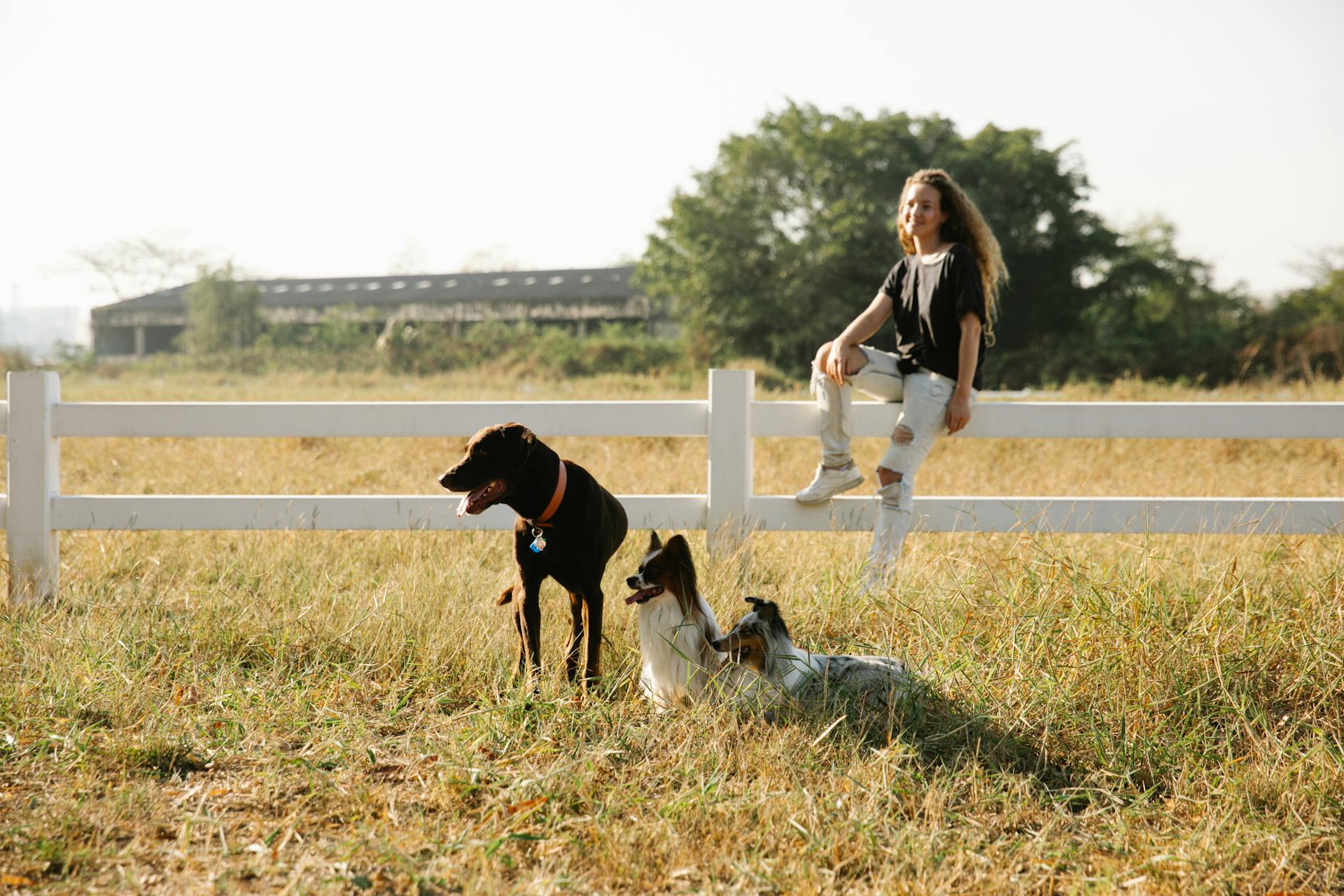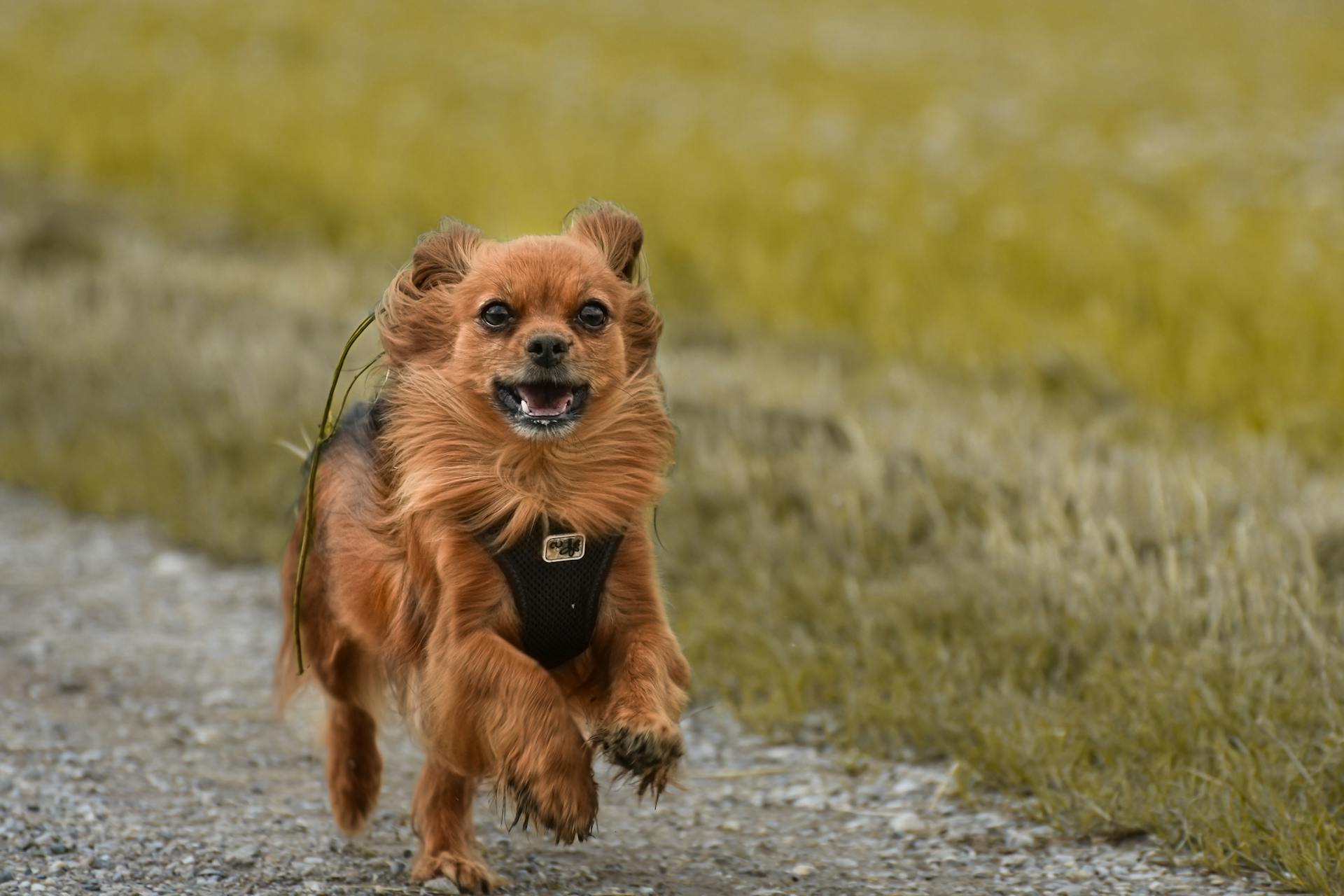
If your dog is diagnosed with a condition called cranial cruciate ligament (CCL) injury, your veterinarian may recommend a tibial-plateau-leveling osteotomy (TPLO) surgery.
A TPLO surgery involves making a cut in the shinbone to realign the joint and stabilize the knee. This type of surgery is often necessary for dogs that are overweight or have a genetic predisposition to CCL injuries.
During the surgery, the surgeon will make an incision in the dog's leg and cut the shinbone to create a new angle for the joint. The goal of this surgery is to reduce the stress on the CCL and allow the dog to heal.
The recovery process for a TPLO surgery typically takes several months, during which time the dog will need to follow a specific exercise and weight management plan to ensure proper healing.
The Procedure
During TPLO surgery, the bone is cut so the tibial plateau can be rotated where the tibia and femur work together. This rotation allows the femur to no longer slide backward, stabilizing the knee.
A portion of the tibia will be removed and repositioned, which is an essential part of the procedure. This repositioning helps to eliminate the need for the CCL ligament, allowing the joint to function normally again.
The knee will be stabilized, and the joint will be stable once again. This is the primary goal of the TPLO procedure.
Here are the key factors to consider when thinking about TPLO surgery:
- Age
- Weight and size
- Activity level (Extremely active? Calm? In between?)
- After-surgery care
- Health (does he have any joint diseases?)
Procedure
During TPLO surgery, the bone is cut so the tibial plateau can be rotated where the tibia and femur work together.
A portion of the tibia will be removed and repositioned, and the femur will no longer be able to slide backward. This is a crucial step in stabilizing the knee.
The knee will be stabilized, and the CCL ligament is no longer required. This means your dog will have use of the stable joint again.
Here are some factors to consider when thinking about TPLO surgery:
- Age
- Weight and size
- Health (does she have any joint diseases?)
- Activity level (Extremely active? Calm? In between?)
- After-surgery care
Pre-Cranial Drawer
Radiographs can help diagnose CCL tears in dogs by visualizing signs of inflammation, pre-existing osteoarthritis, and cranial displacement of the tibia in relation to the femur.
Effusion and pre-existing osteoarthritis changes can be seen on radiographs at the joint capsular attachment to the femur.
The pre-operative radiograph shows these signs, which can aid in diagnosis.
Surgical treatment is the preferred option for CCL tears to alleviate instability, pain, and prevent osteoarthritis development.
In rare cases, medical conditions may preclude surgery, and bracing can be discussed as a medical therapy alternative.
Tibial plateau leveling osteotomy (TPLO) is a common surgical treatment that allows for early weight-bearing return and minimal osteoarthritis progression post-operatively.
The TPLO procedure involves a bone cut (osteotomy) in the tibia to rotate and level the tibial plateau in relation to the horizon.
Recovery and Aftercare
The first 12 weeks after TPLO surgery are critical, and full recovery may take anywhere from 8 weeks to 6 months. Your dog's breed, age, and size can affect his recovery time.
It's essential to give the anesthesia time to wear off and keep surgical areas clean, protected, and covered to prevent infection. Restrict physical activity to give bones time to heal, but follow any recommended exercise routines.
You should avoid high-intensity activities such as playing with other dogs, climbing steep stairs, jumping, and running. While short on-leash walks are advisable, it's crucial to remember that dogs tend to heal quickly and crave physical activity, so it's possible for him to want to be active before his body is prepared.
Here are some key things to keep in mind during the recovery period:
- Give the anesthesia time to wear off
- Keep surgical areas clean, covered and protected from infection
- Restrict physical activity to give bones time to heal but follow any recommended exercise routines
- Avoid high-intensity activities such as playing with other dogs, climbing steep stairs, jumping, and running
- Leave your dog unattended during the day for bathroom breaks and exercise to prevent stiffness
By the eighth week, if all is well, stitches should be ready to come out. Your dog will appreciate a few new toys and your doting attention as he recovers, similar to people who are recovering from any procedure.
Post-Operative Radiograph
After surgery, your doctor will take a post-operative radiograph to assess the placement of your implant and the relationship of the tibial plateau to the horizon.
This image will provide a clear visual of the implant's position in relation to the surrounding bone and tissue.
Knee Post-Op Schematic
As your dog recovers from TPLO surgery, it's essential to understand the post-operative schematic of the knee. The leveled tibial plateau now loads the caudal cruciate ligament, which stops the cranial translation of the tibia in relationship to the femur, thus creating a stable stifle.
To visualize this, take a look at a post-operative schematic of the knee. This will give you a clear picture of how the different components of the knee joint are interacting after surgery.
The first 12 weeks following surgery are critical for recovery. Full recovery can take anywhere from 8 weeks to 6 months, depending on your dog's breed, age, and size.
Here are some key things to remember during the recovery period:
- Allow time for anesthesia to wear off
- Keep surgical areas clean, protected, and covered to prevent infection
- Restrict physical activity to give bones time to heal but follow any recommended exercise routines
It's crucial to prevent infection and restrict physical activity during the recovery period. Since dogs tend to heal quickly and are drawn to physical activity, it's possible for them to want to be active before their body is prepared.
Recovering from Surgery: What to Do and Avoid
Recovering from surgery is a critical period for your dog's full recovery. Full recovery from TPLO surgery can take anywhere from 8 weeks to 6 months.
Your dog's breed, age, and size can affect their recovery time. Restricting physical activity is essential to give bones time to heal, but follow any recommended exercise routines.
Preventing infection is crucial during the recovery period. Keep surgical areas clean, covered, and protected from infection.
Dogs tend to heal quickly and crave physical activity, so it's possible for them to want to be active before their body is prepared. Avoid high-intensity activities such as running, jumping, playing with other dogs, and even steep stairs.
You can likely leave your dog unattended during the day to go to work or school, but they'll still need potty breaks and exercise to avoid stiffness.
Here's a list of things to avoid during the recovery period:
- High-intensity activities such as running, jumping, playing with other dogs, and even steep stairs
- Leaving your dog alone around other dogs or animals
- Not keeping surgical areas clean, covered, and protected from infection
- Not restricting physical activity
By week 8, if all is well, the stitches should be ready to come out. Your dog will appreciate a few new toys and your doting attention as they recover.
Frequently Asked Questions
What is the success rate of tibial plateau leveling osteotomy?
The success rate of TPLO surgery is between 90-95%, allowing dogs to recover quickly and regain full mobility with proper rehabilitation.
How much does a tibial plateau leveling osteotomy cost?
The cost of a tibial plateau leveling osteotomy (TPLO) surgery typically ranges from $3,000 to $6,000, with costs varying depending on the veterinary clinic and location.
Sources
- https://libertyhillvets.com/tibial-plateau-leveling-osteotomy-tplo/
- https://www.mamaroneckvet.com/site/blog/2022/06/16/tplo-surgery-in-dogs
- https://www.waxhaw.providencevets.com/site/blog/2020/06/30/tibial-plateau-leveling-osteotomy-surgery-dogs
- https://www.westportveterinary.com/site/blog-westport-vet/2021/07/10/tibial-plateau-leveling-osteotomy-surgery-dogs
- https://familypethealth.com/tibial-plateau-leveling-osteotomy-tplo/
Featured Images: pexels.com


